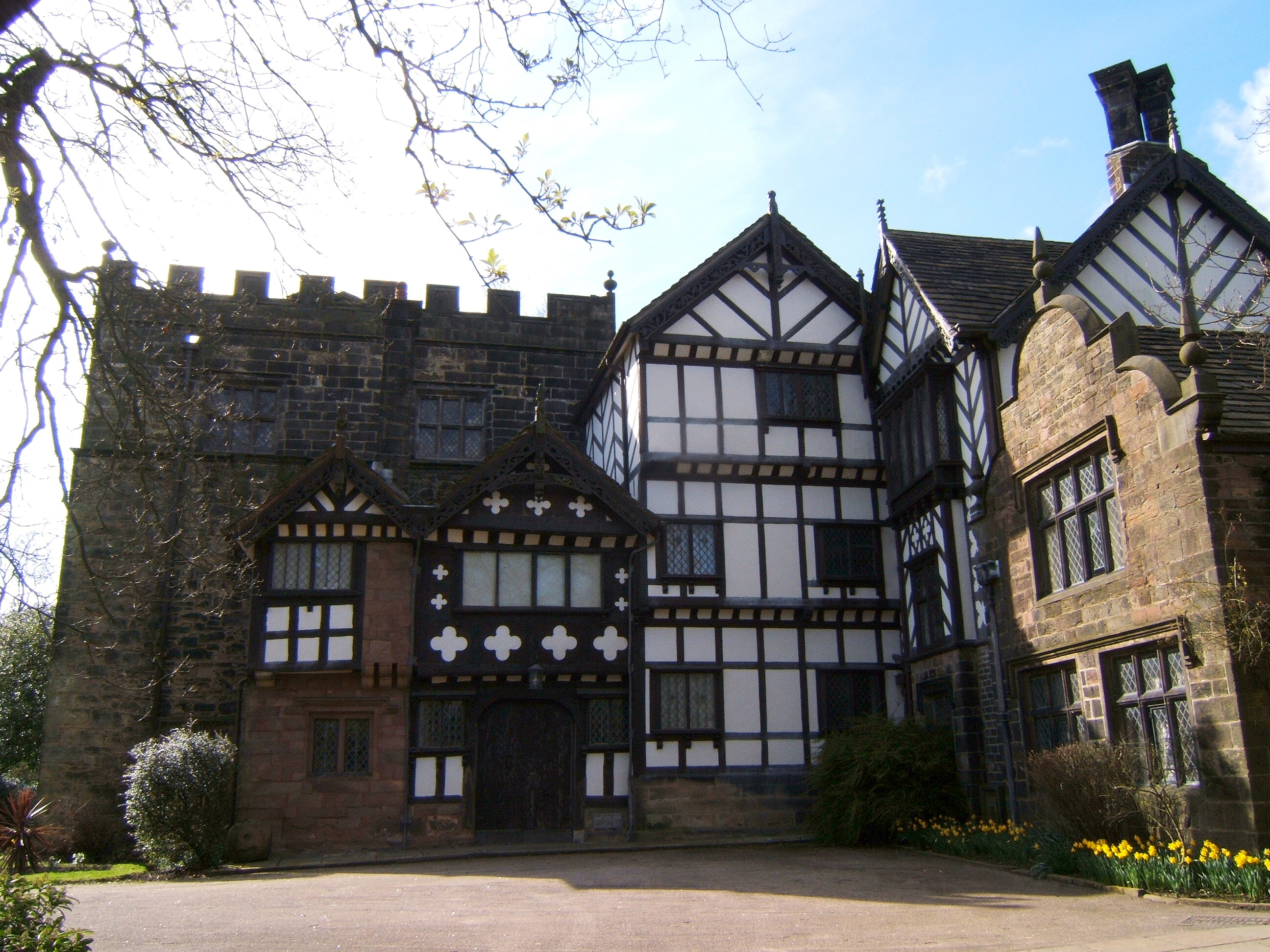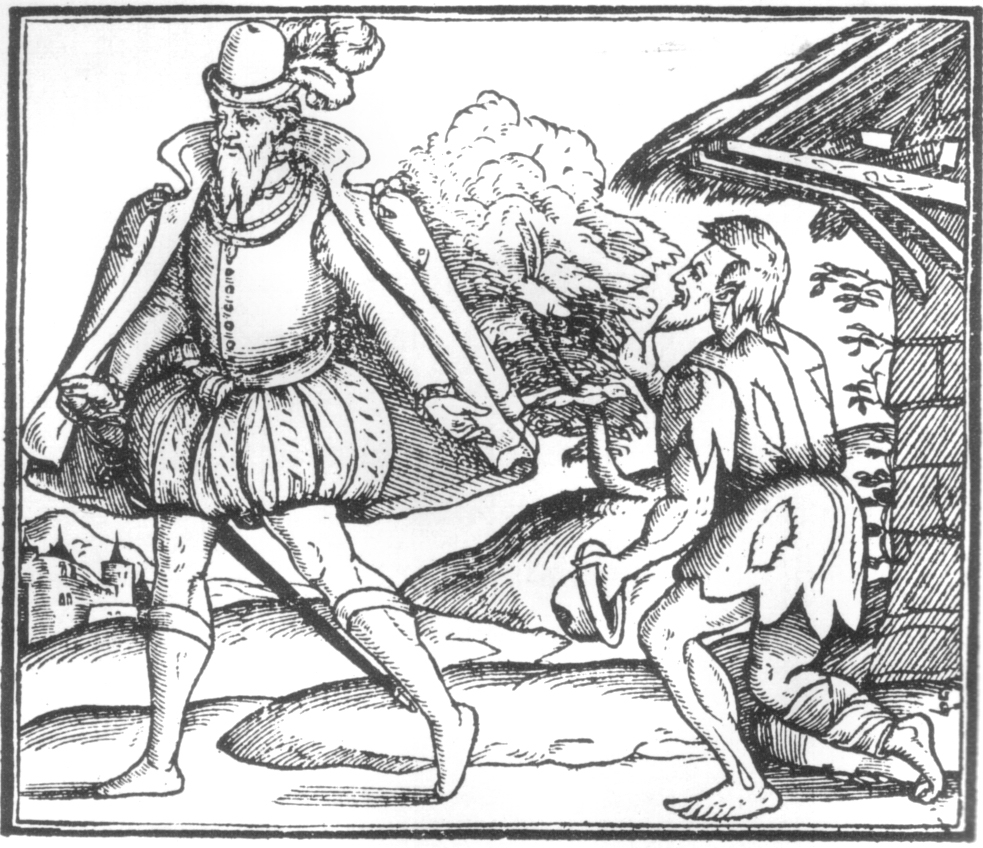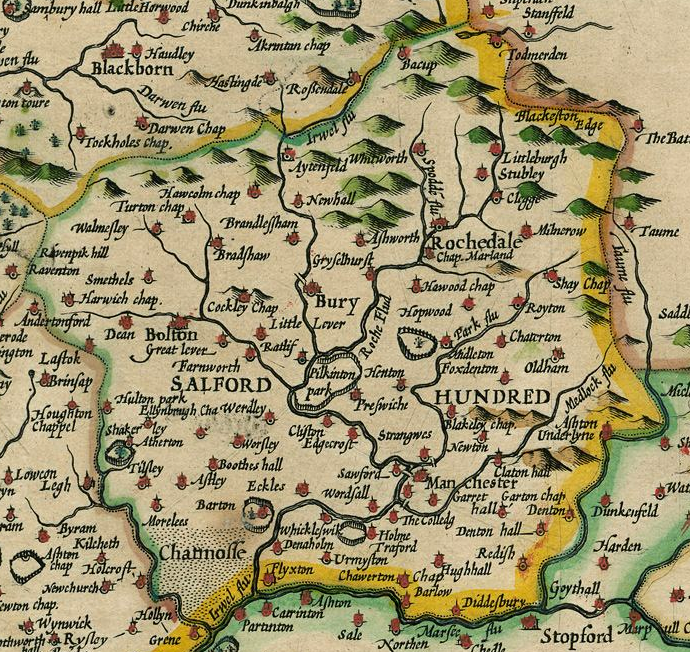|
Turton Urban District
Turton Urban District was, from 1873 to 1974, a local government district centred on the historical area of Turton in the administrative county of Lancashire, England. History Background Turton was a township and chapelry of the civil and ecclesiastical parish of Bolton le Moors in the Salford Hundred of Lancashire. In 1837, Turton became part of the Bolton Poor Law Union which took responsibility for funding the Poor Law within that Union area. In 1866, Turton was given the status of a civil parish. Formation A resolution for the adoption of the Local Government Act 1858 was passed on 8 August 1872 by the owners and ratepayers of the township of Turton, and the following year a local board was formed to govern the area. After the Public Health Act 1875 was passed by Parliament in that year, Turton Local Board assumed extra duties as an urban sanitary district, although the Local Board's title did not change. Change In 1895, following the implementation of the Local Gover ... [...More Info...] [...Related Items...] OR: [Wikipedia] [Google] [Baidu] |
Turton Tower
Turton Tower is a manor house in Chapeltown in North Turton, Borough of Blackburn with Darwen, Lancashire, England. It is a scheduled ancient monument and a Grade I listed building. It was built in the late Middle Ages as a two-storey stone pele tower which was altered and enlarged mainly in late 16th century. It is built on high ground 600 feet above sea level about four miles north of Bolton. William Camden described it as being built "amongst precipices and wastes." A north wing and additions were made during the reign of Queen Elizabeth I and alterations were made during the early years of Queen Victoria. Structure The oldest part of the building, which was probably built in the early 15th century, is the stone pele tower which measures 45 feet in length from north to south and is 28 feet in width. It is about 35 feet in height with walls four feet thick. In the northwest corner of the tower, the shaft of a garderobe projects from the main structure. The tower had three l ... [...More Info...] [...Related Items...] OR: [Wikipedia] [Google] [Baidu] |
Chapelry
A chapelry was a subdivision of an ecclesiastical parish in England and parts of Lowland Scotland up to the mid 19th century. Status A chapelry had a similar status to a Township (England), township, but was so named as it had a chapel of ease (chapel) which was the community's official place of assembly in religious and secular matters. The fusion of these matters – principally tithes – was heavily tied to the main parish church. However, the medieval church's doctrine of subsidiarity when the congregation or sponsor was wealthy enough, supported their constitution into new parishes. Chapelries were first widespread in northern England and in larger parishes across the country which had populous outlying places. Except in cities, the entire coverage of the parishes (with very rare extra-parochial areas) was fixed in medieval times by reference to a large or influential manor or a set of Manorialism, manors. A lord of the manor or other patron of an area, often the Diocese, ... [...More Info...] [...Related Items...] OR: [Wikipedia] [Google] [Baidu] |
Parliament Of The United Kingdom
The Parliament of the United Kingdom of Great Britain and Northern Ireland is the supreme legislative body of the United Kingdom, and may also legislate for the Crown Dependencies and the British Overseas Territories. It meets at the Palace of Westminster in London. Parliament possesses legislative supremacy and thereby holds ultimate power over all other political bodies in the United Kingdom and the Overseas Territories. While Parliament is bicameral, it has three parts: the sovereign, the House of Lords, and the House of Commons. The three parts acting together to legislate may be described as the King-in-Parliament. The Crown normally acts on the advice of the prime minister, and the powers of the House of Lords are limited to only delaying legislation. The House of Commons is the elected lower chamber of Parliament, with elections to 650 single-member constituencies held at least every five years under the first-past-the-post system. By constitutional conventi ... [...More Info...] [...Related Items...] OR: [Wikipedia] [Google] [Baidu] |
Public Health Act 1875
The Public Health Act 1875 ( 38 & 39 Vict. c. 55) is an act of the Parliament of the United Kingdom, one of the Public Health Acts, and a significant step in the advancement of public health in England. Its purpose was to codify previous measures aimed at combating filthy urban living conditions, which caused various health threats, including the spread of many diseases such as cholera and typhus. Background Reformers had from the 1830s wanted to resolve sanitary problems in urban areas, because sewage was flowing down the street daily, including the presence of sewage in living quarters. In 1848 their efforts led to the establishment of a three-man Board of Health – if one with very limited powers. Many factors delayed effective implementation of reform, however, such as the fact that to perform a clean-up would cost money, and neither government, factory owners, or local authorities were keen to pay. Gradually, however, reformers helped to counteract the laissez-fai ... [...More Info...] [...Related Items...] OR: [Wikipedia] [Google] [Baidu] |
Local Board Of Health
A local board of health (or simply a ''local board'') was a local authority in urban areas of England and Wales from 1848 to 1894. They were formed in response to cholera epidemics and were given powers to control sewers, clean the streets, regulate environmental health risks including slaughterhouses and ensure the proper supply of water to their districts. Local boards were eventually merged with the corporations of municipal boroughs in 1873, or became urban district (Great Britain and Ireland), urban districts in 1894. Pre-Public Health Act 1848 Public Health Act 1848 The first local boards were created under the Public Health Act 1848 (11 & 12 Vict. c. 63), also known as the Health of Towns Act 1848. The aim of the act was to improve the sanitary condition of towns and populous places in England and Wales by placing: the supply of water; sewerage; drainage; cleansing; paving, and environmental health regulation under a single local body. The act could be applied to any pla ... [...More Info...] [...Related Items...] OR: [Wikipedia] [Google] [Baidu] |
Poor Law
In English and British history, poor relief refers to government and ecclesiastical action to relieve poverty. Over the centuries, various authorities have needed to decide whose poverty deserves relief and also who should bear the cost of helping the poor. Alongside ever-changing attitudes towards poverty, many methods have been attempted to answer these questions. Since the early 16th century legislation on poverty enacted by the Parliament of England, poor relief has developed from being little more than a systematic means of punishment into a complex system of government-funded support and protection, especially following the creation in the 1940s of the welfare state. Tudor era In the late 15th century, Parliament took action on the growing problem of poverty, focusing on punishing people for being " vagabonds" and for begging. In 1495, during the reign of King Henry VII, Parliament enacted the Vagabonds and Beggars Act 1494. This provided for officers of the law to ... [...More Info...] [...Related Items...] OR: [Wikipedia] [Google] [Baidu] |
Poor Law Union
A poor law union was a geographical territory, and early local government unit, in Great Britain and Ireland. Poor law unions existed in England and Wales from 1834 to 1930 for the administration of poor relief. Prior to the Poor Law Amendment Act 1834 the administration of the English Poor Laws was the responsibility of the vestries of individual parishes, which varied widely in their size, populations, financial resources, rateable values and requirements. From 1834 the parishes were grouped into unions, jointly responsible for the administration of poor relief in their areas and each governed by a board of guardians. A parish large enough to operate independently of a union was known as a poor law parish. Collectively, poor law unions and poor law parishes were known as poor law districts. The grouping of the parishes into unions caused larger centralised workhouses to be built to replace smaller facilities in each parish. Poor law unions were later used as a basis for the ... [...More Info...] [...Related Items...] OR: [Wikipedia] [Google] [Baidu] |
Bolton
Bolton ( , locally ) is a town in Greater Manchester in England. In the foothills of the West Pennine Moors, Bolton is between Manchester, Blackburn, Wigan, Bury, Greater Manchester, Bury and Salford. It is surrounded by several towns and villages that form the wider Metropolitan Borough of Bolton, borough, of which Bolton is the administrative centre. The town is within the Historic counties of England, historic county boundaries of Lancashire. A former mill town, Bolton has been a centre for textile production since the 14th century when Flemish people, Flemish weavers settled in the area, introducing a wool and cotton-weaving tradition. It was a 19th-century boomtown, development largely coincided with the introduction of textile manufacture during the Industrial Revolution. At its peak in 1929, its 216 cotton mills and 26 bleaching and dyeing works made it one of the largest and most productive centres of Spinning (textiles), cotton spinning in the world. The Brit ... [...More Info...] [...Related Items...] OR: [Wikipedia] [Google] [Baidu] |
British History Online
''British History Online'' is a digital library of primary and secondary sources on medieval and modern history of Great Britain and Ireland. It was created and is managed as a cooperative venture by the Institute of Historical Research, University of London and the History of Parliament Trust. Access to the majority of the content is free, but other content is available only to paying subscribers. The content includes secondary sources such as the publications of The History of Parliament, the Royal Commission on the Historical Monuments of England, the Calendar of Close Rolls, '' Survey of London'' and the ''Victoria County History''; and major published primary sources such as '' Letters and Papers of the Reign of Henry VIII'' and the ''Journals'' of the House of Lords and House of Commons The House of Commons is the name for the elected lower house of the Bicameralism, bicameral parliaments of the United Kingdom and Canada. In both of these countries, the Commons holds m ... [...More Info...] [...Related Items...] OR: [Wikipedia] [Google] [Baidu] |
Victoria County History
The Victoria History of the Counties of England, commonly known as the Victoria County History (VCH), is an English history project which began in 1899 with the aim of creating an encyclopaedic history of each of the historic counties of England, and was dedicated to Queen Victoria. In 2012 the project was rededicated to Queen Elizabeth II in celebration of her Diamond Jubilee year. Since 1933 the project has been coordinated by the Institute of Historical Research in the University of London. History The history of the VCH falls into three main phases, defined by different funding regimes: an early phase, 1899–1914, when the project was conceived as a commercial enterprise, and progress was rapid; a second more desultory phase, 1914–1947, when relatively little progress was made; and the third phase beginning in 1947, when, under the auspices of the Institute of Historical Research, a high academic standard was set, and progress has been slow but reasonably steady. These ... [...More Info...] [...Related Items...] OR: [Wikipedia] [Google] [Baidu] |
Salford Hundred
The Salford Hundred (also known as Salfordshire) was one of the subdivisions (a hundred) of the historic county of Lancashire in Northern England. Its name alludes to its judicial centre being the township of Salford (the suffix ''-shire'' meaning the territory was appropriated to the prefixed settlement). It was also known as the Royal Manor of Salford and the Salford wapentake.. Origins The Manor or Hundred of Salford had Anglo-Saxon origins. The ''Domesday Book'' recorded that the area was held in 1066 by Edward the Confessor. Salford was recorded as part of the territory of ''Inter Ripam et Mersam'' or "Between Ribble and Mersey", and it was included with the information about Cheshire, though it cannot be said clearly to have been part of Cheshire. The area became a subdivision of the County Palatine of Lancaster (or Lancashire) on its creation in 1182. Salford Hundred Court In spite of its incorporation into Lancashire, Salford Hundred retained a separate jurisdiction ... [...More Info...] [...Related Items...] OR: [Wikipedia] [Google] [Baidu] |




